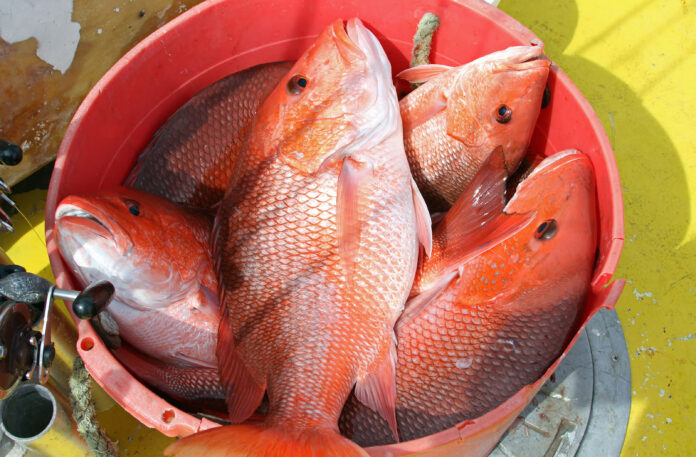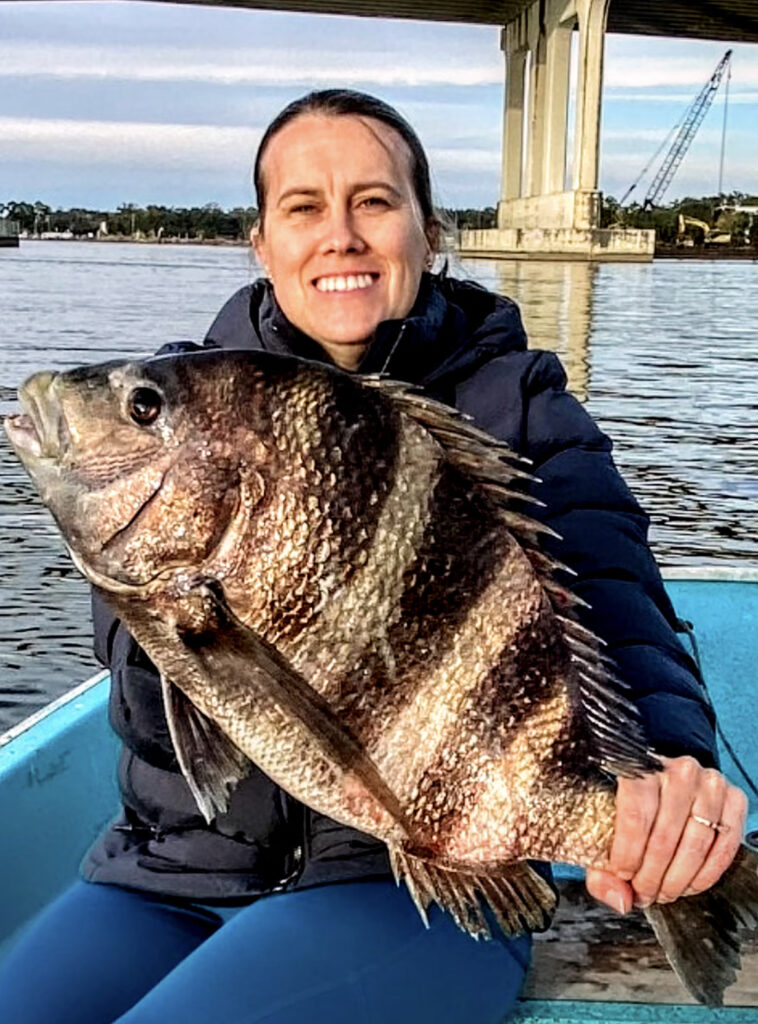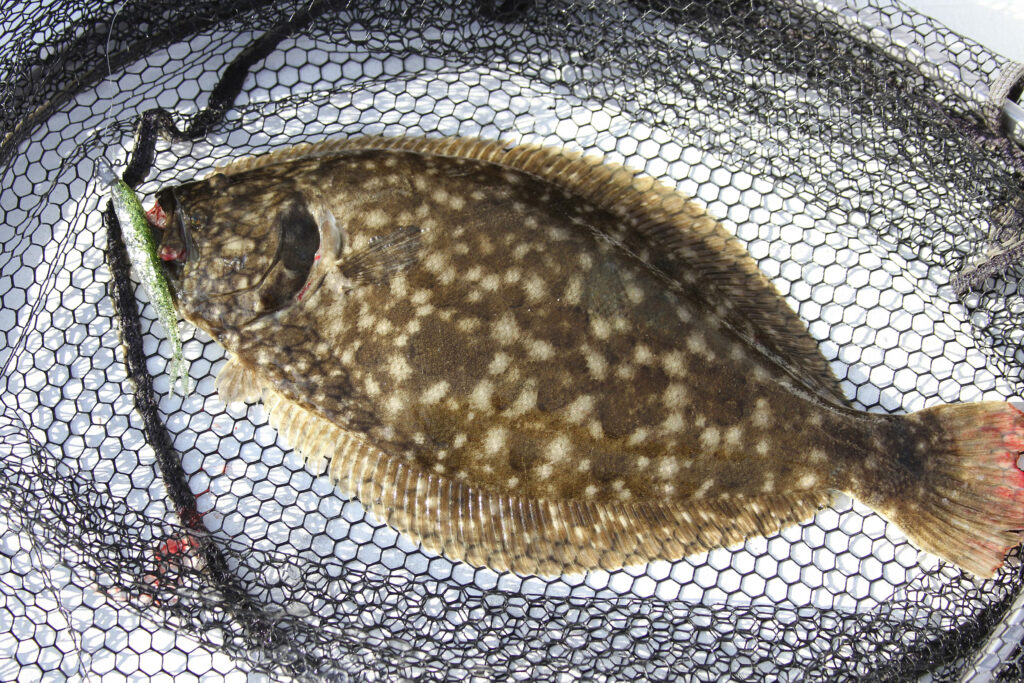
If you weren’t able to attend one of three public meetings recently, the Alabama Department of Conservation and Natural Resources’ (ADCNR) Marine Resources Division (MRD) wants your input.
The meetings were held in Spanish Fort, Tillman’s Corner and Orange Beach to engage the public on a variety of subjects concerning Alabama’s saltwater fisheries management, including the state’s iconic fish species, the American red snapper.
“We are always listening to what the public has to say,” said MRD Director Scott Bannon, who will present the information to ADCNR Commissioner Chris Blankenship for possible consideration at the March 8 Conservation Advisory Board meeting in Montgomery. “We want to hear what people are seeing, what they’re not seeing and what their thoughts are. It is important to us considering the resources are really theirs.”
Of course, red snapper was high on the discussion list at the meetings with the current Alabama season extending through the end of the year. The numbers as of December 9 from Snapper Check, the mandatory reporting system, indicate private recreational anglers are not likely to reach the quota limit of 659,654 pounds this year.
One proposal brought up at the public meetings was possibly opening the recreational season for the entire month of June instead of just the current four-day weekends of Friday through Monday. The season would revert to four-day weekends in July and continue until the annual quota is estimated to be met. MRD said fishery-independent research suggests the red snapper population is stable, and, while maintaining the ability to monitor catch levels, the season structure could be modified to stay below the harvest limit.
“There was a lot of support for keeping the recreational season open all of June,” Bannon said. “There are also a lot of people who like the weekend season like it is now. We will discuss that with the Commissioner and see how he wants to proceed.”
Currently, the captain and crew on state-permitted vessels for hire are allowed to retain a bag limit of fish in addition to the customers’ take. On those vessels designed to carry six or fewer passengers, the captains asked whether eliminating their bag limit would have any effect on the resources. Bannon said 309 vessels are permitted by the state for residents and 36 for non-residents. Those vessels are permitted to fish for any species in state waters, and some will make multiple trips in a day. About 100 federally permitted boats dock in Alabama and if they are fishing in federal waters they would abide by existing federal captain and crew regulations.
“Our guide industry has learned to be very responsible and encourage people to have a conservation mindset,” Bannon said. “They just felt there was not a need for captain and crew bag limits to be kept. Within the industry, most people wanted that.
“When you look at the data, the number of trips where the captain and crew kept limits the percentage has gone down, but the number of trips has gone up. When we first started, we sold about 150 licenses, and now that number is more than 300.”

Dena Thornton shows off a huge 11.5-pound sheepshead caught this winter while fishing with Brett Rutledge. (ADCNR)
Another topic of significant discussion was about sheepshead, a species that has become a target for recreational anglers recently after years of relative obscurity. Bannon said the harvest data indicate the species is feeling the additional pressure from recreational anglers. The number of recreational saltwater licenses sold has grown from about 75,000 in 2001 to more than 210,000 in 2023. In a proposal that will go to Commissioner Blankenship, the bag limit would be lowered from 10 fish per person to eight fish per person with the same 12-inch minimum fork length.
“In 2022 a profile on sheepshead was done, which was like a mini assessment,” Bannon said. “There are some concerns that show up. In our sampling program, we started seeing fewer and fewer sheepshead over a consistent period of time. The fishery is pretty stable, but the increase in the number of anglers with more than 200,000 licenses sold is increasing the effort. And it’s a pretty popular species during the peak spawning during March and April. That’s when we see most of the bag limits occur.
“Our goal is to get ahead of these situations instead of needing a drastic change. In talking with Dr. (Sean) Powers (University of South Alabama) and looking at our data, we felt a little change would be helpful. Right now, the average size fish is just a little more than 15 inches. That gives more fish a chance to get to a spawning size.”
Redfish (red drum) was also discussed, especially the regulation that allows anglers to keep one redfish larger than 26 inches in the daily bag limit of three fish.
“Some for-hire and private anglers have asked to take a look at whether or not we should be keeping the one oversized red drum,” Bannon said. “Dr. Powers has done some red drum work over the years, and he felt that there are benefits to releasing those oversized fish and not allow any retention. That would help maintain a positive spawning biomass. Red drum is a species our anglers target with regularity. Our 16 to 26 (inches slot limit) is really at the bottom end of their spawning potential. Not retaining those bigger ones would release about 37,000 fish a year and help increase that spawning potential.”
One species that has rarely been seen in Alabama waters is now showing up in estuaries and rivers along the coast. The common snook is a popular game fish in Florida, mainly south Florida, but a northward migration has occurred. Dr. Richard Tarver Webb caught a snook that weighed 5 pounds, 2.6 ounces to establish the record in 2023, but that record was broken by Gardner Love with a 7-pound, 3-ounce fish in 2024. Snook is currently unregulated, and MRD is considering implementing a bag limit of one per person with a minimum total length of 24 inches.
“There has been a push by some anglers to have a zero bag limit,” Bannon said. “I’m not big on having a no-take fishery. I feel we are able to provide access to the resources. Historically, this is not a species that has been present in Alabama with any consistency. The discussion is whether they are resident fish, but they are very sensitive to water temperature, so once we have a good, cold winter, it could move them back out.
“CCA (Coastal Conservation Association) Alabama is considering adding snook to the TagAlabama program, and that data will be provided to the University of South Alabama. Dr. Charlie Martin of Dauphin Island Sea Lab is doing some studies on snook and is promoting people to take pictures, weights and lengths and send that to him (cmartin@disl.edu) so he can develop some data on snook.”
Tripletail (blackfish) is a species that anglers are targeting more often than in the past, and the information on the fish is not extensive.
“There is a lot of tagging with acoustic tags and traditional tags to try to work out migration patterns and other data,” Bannon said. “We do know they travel a lot farther than most people think, and they grow very fast. We’re just asking for feedback on what they’re seeing to help determine if regulations may need to be adjusted in the future.
“It wasn’t too long ago that if you were the tripletail guy, you were the mystic. You didn’t say anything about it. Then social media showed up, and now everybody’s an expert. They’re targeted much more now. Some people have trips that specifically look for tripletail.”
MRD discussed implementing a bag limit for sting rays and skates. The concern is primarily associated with bow fishing. A common practice is to shoot or gig them and remove their tails and there is currently no size or bag limit. Skates and rays have very low reproductive rates with long gestation periods.
“Flounder is the species most people would like to target, but sting rays and skates are in the same waters,” he said. “They make easy targets. Shooting them just to be shooting them and then removing the tail is not very conservation-minded.”
As everyone who has reeled up half a fish knows, sharks are abundant in Alabama waters, and several shark fishermen have asked for more leeway to harvest the allowed shark species.
“Some anglers have requested more shark fishing opportunities to target the smaller sharks that show up in coastal waters,” Bannon said. “We currently have a rule that you can’t have more than five hooks. We’re looking at some options to provide increased opportunity. However, we need to be mindful of negative interactions with other species and sea turtles.
“Because of the shark interactions with recreational, commercial and charter fishermen, a lot of people are very supportive of some increased effort in targeting sharks. But we don’t want to swing the pendulum too hard and too fast. We are going to approach any increases cautiously.”

Flounder numbers have rebounded in Alabama waters with both recreational and commercial anglers reporting increased catches. (ADCNR)
Good news about the flounder population in Alabama waters was shared at the meetings.
“We’re seeing better flounder numbers recreationally and commercially,” Bannon said. “We’re seeing an increase in benefits to private anglers with more people catching more fish.”
In 2019, MRD implemented flounder regulations that reduced the recreational bag limit to five fish and increased the minimum size to 14 inches total length. Also implemented was a 30-day no-fishing period for the month of November, when flounder spawn, for commercial and recreational anglers. On the commercial side, MRD set trip harvest limits of 40 fish, whether taken by hook and line, gig or gill net. Also, in 2008, a state law was passed that will eventually phase out gill net fishing. Only gill net fishermen who had a license on June 1, 2008, are allowed to renew that license for the remainder of the person’s life. The gill net licenses cannot be transferred.
“At that time, the commercial gill net fishermen were not seeing catches of 40 fish, but now they are and they would have to discard anything over 40 fish,” Bannon said. “The fish are rebounding. I’ve always said that if we get an opportunity to give some back that we should. We have a limited number who target flounder, and those gill netters are going away through attrition. Every year we lose one to two gill net licensees. If we increase the trip limit to 60, 80 or 100 fish, it is projected to just barely move the needle for overall harvest.
“These are multi-generational fishermen. It’s a limited number of people, and I think they ought to be able to support their families and provide domestic seafood to our restaurants and seafood retailers.”
Email marine.resources@dcnr.alabama.gov with comments and/or concerns about recreational and commercial fishing.
To view the 2025 regulation considerations presented at the recent public meeting hosted by the MRD, visit www.outdooralabama.com/fishing/saltwater-recreational-size-creel-limits.


















